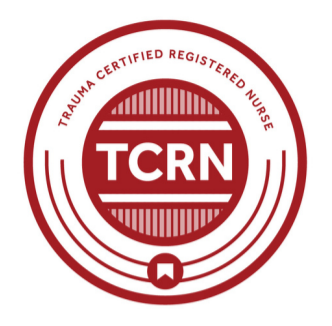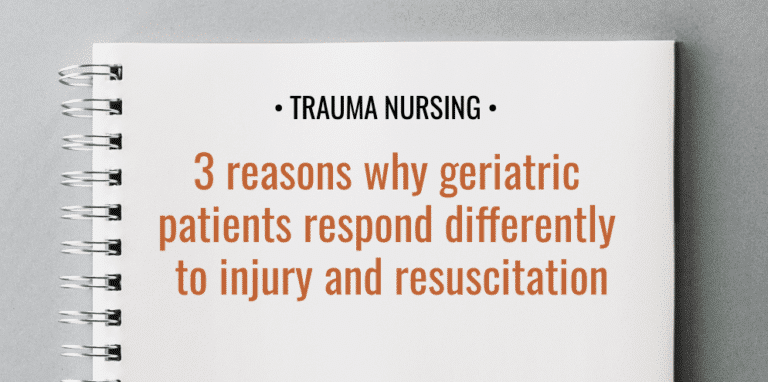Geriatric patients, defined as adults aged 65 and older, can experience significant injury and disability following a traumatic event. In fact, older individuals have an increased risk of mortality and morbidity from even less severe injuries.
Trauma and emergency nurses should understand three reasons why geriatric patients respond differently to traumatic injury and trauma resuscitation.
1. Aging-related changes in the body alter the physiologic response to injury
Geriatric patients typically have altered baseline vitals due to changes in aging. In addition, generally lower physiologic reserves make older patients more sensitive to alterations in their fluid and electrolyte balance. For these reasons, the physiologic response to injury can be different for geriatric patients and subtle changes in laboratory values can mean serious complications.
For example, older individuals have a generally slower physiologic response to injury. Because of this, hypoperfusion is often underappreciated in the geriatric patient. Trauma teams should assess the patient’s baseline deficit promptly via an arterial blood gas (ABG) or lactate level. This will help providers identify any masked signs of shock and facilitate prompt admission to the ICU.
Geriatric trauma patients are also at an increased risk of certain injuries and complications. For instance, older patients have an increased risk of brain bleed after a ground-level fall. Even if an initial CT is clear, some geriatric patients should be monitored closely in the ICU for brain hematoma due to their higher risk.
In addition, geriatric trauma patients generally face a slower recovery process. Aging-related changes to the skin and a slower inflammatory process can lead to longer wound healing times. The onset of infection can be slower in geriatric patients, and a weaker cough puts the older patient at higher risk for pneumonia.
2. Common preexisting conditions can complicate trauma resuscitation
Common preexisting conditions can result in an altered physiologic response to injury in geriatric patients. For example, the prevalence of kidney disease increases with age. In the setting of traumatic injury, reduced kidney function can easily lead to electrolyte imbalances that manifest as confusion, delirium, cardiac abnormalities and other complications.
In addition, clinicians should consider that a traumatic event may have been caused by a preexisting medical condition. For example, a motor vehicle collision may have resulted from a loss of consciousness due to a cardiac event or even mental confusion due to an infection.
Trauma teams should obtain a complete medical history for geriatric trauma patients as soon as possible. If a history cannot be obtained from the patient, family members or the EMR, be sure to get a medical history during the tertiary survey.
3. Medications common in the older population can mask the effects of injury
Common medications in the geriatric population can alter key vital signs, potentially leading to missed complications.
For example, the classic signs of shock are decreased blood pressure and tachycardia. However, medications such as beta-blockers, anticoagulants and steroids can alter these vital signs, masking the symptoms of hypovolemia secondary to shock or hemorrhage. The risk is slower recognition of a serious complication and delayed clinical response.
Clinicians should also be aware that the majority of medications prescribed to trauma patients — for example, analgesics and muscle relaxants — are classified under the Beers Criteria® as “moderate risk” or “avoid” for geriatric patients. Whenever possible, the trauma service should consult a geriatrician or internist to assist with medication management for older trauma patients.
Bonus: Complete guidelines available
For complete recommendations on the care of older trauma patients — including recommended laboratory assessments — see Best Practices Guidelines: Geriatric Trauma Management from ACS Trauma Quality Programs.



